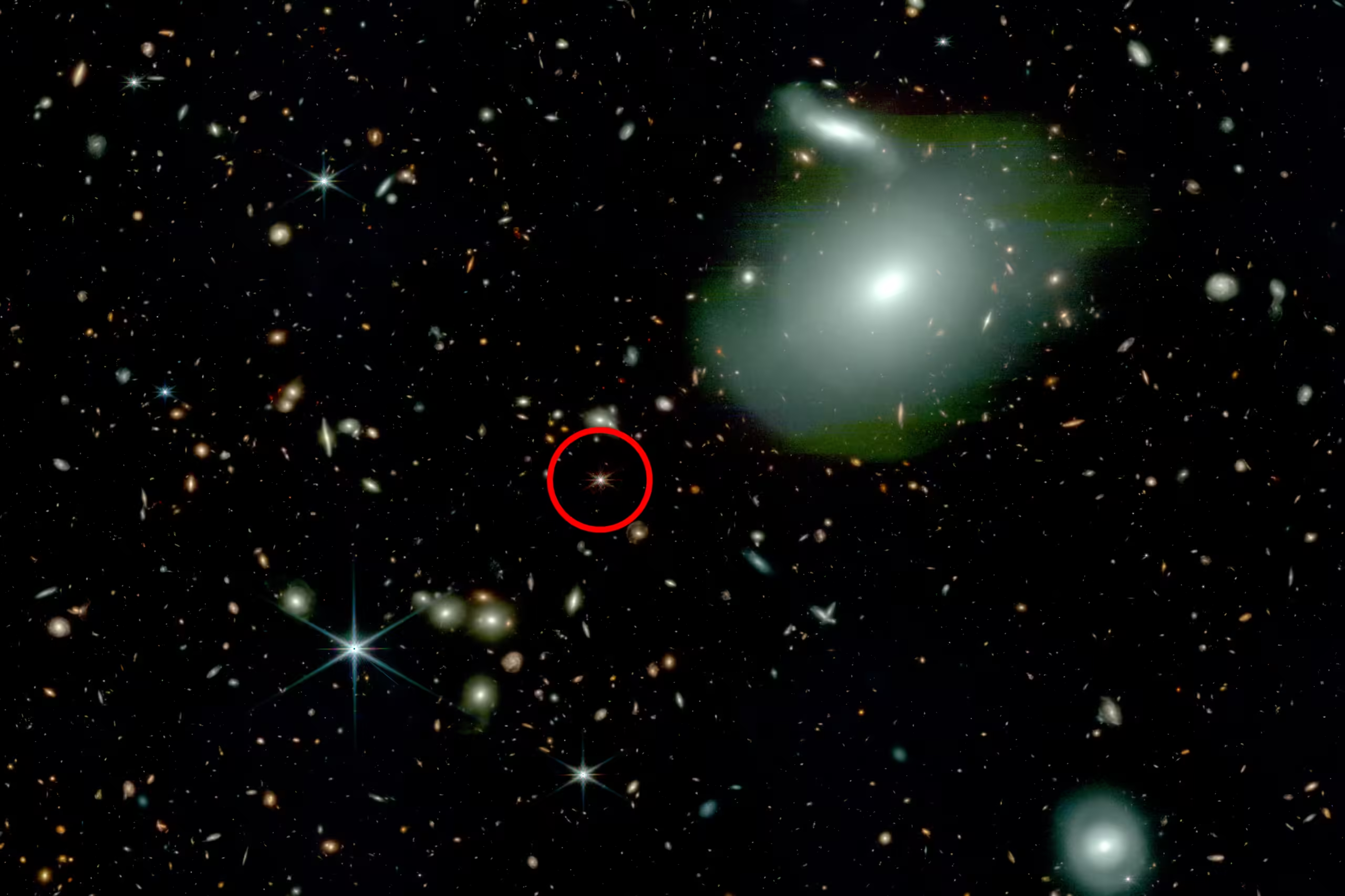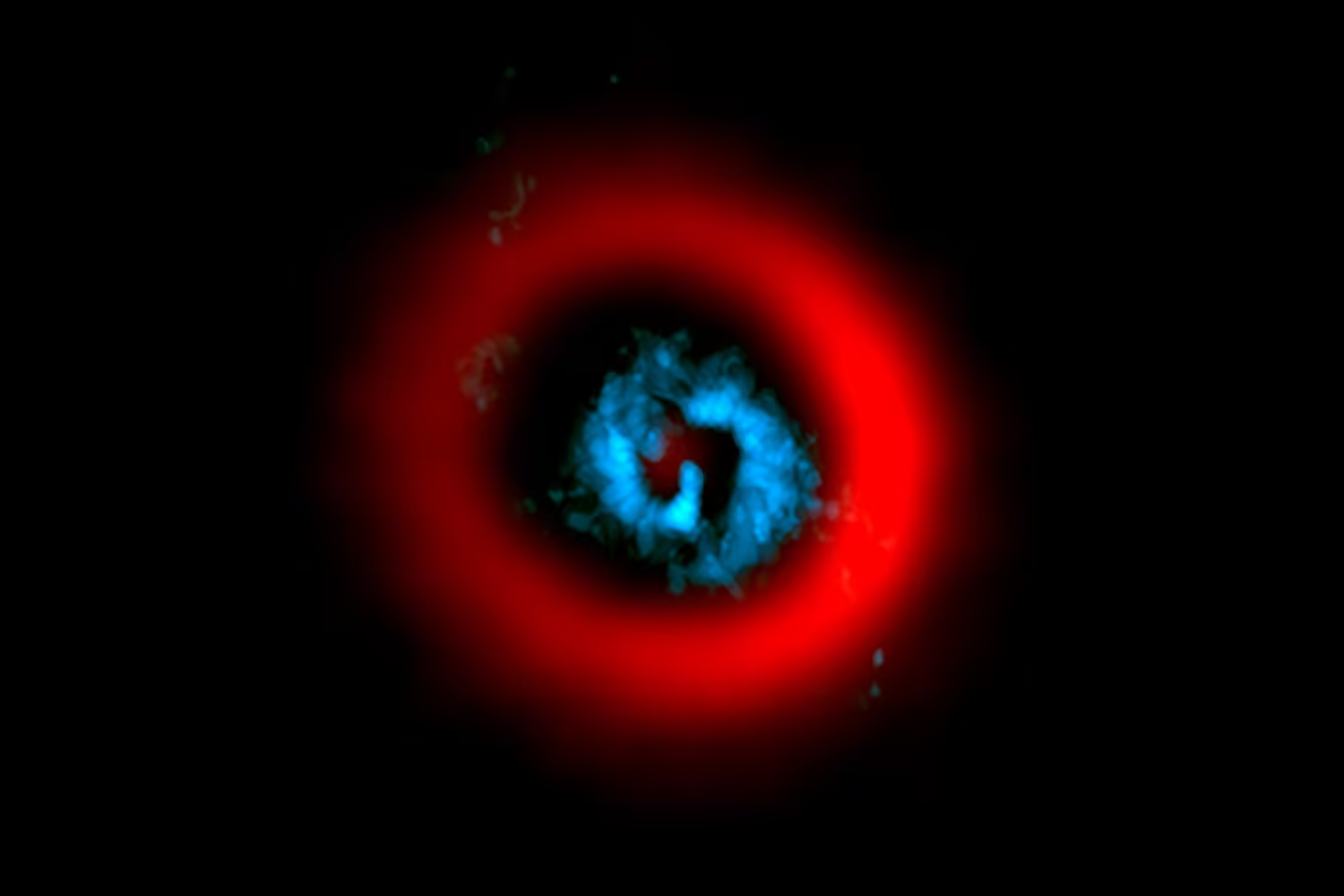A quasar is the extremely bright core of a galaxy, hosting an active supermassive black hole at its center. As the black hole pulls in surrounding gas and dust, it releases a tremendous amount of energy, making quasars some of the brightest objects in the universe. Quasars have been observed just a few hundred million years after the Big Bang, and how they became so luminous and massive in such a short cosmic time remains a mystery.
Scientists have suggested that early quasars originated from dense regions of primordial matter, which would have also produced numerous smaller galaxies around them. However, in a new study led by MIT, astronomers have observed ancient quasars that appear surprisingly isolated in the early universe.
Using NASA’s James Webb Space Telescope (JWST), astronomers looked back over 13 billion years to study the cosmic environment of five known ancient quasars. They found a surprising variety in their surroundings, or "quasar fields." While some quasars are located in densely populated fields with over 50 neighboring galaxies, as predicted by models, others seem to drift in emptiness, with only a few wandering galaxies nearby.
These solitary quasars challenge physicists’ understanding of how such luminous objects could have formed so early in the universe without a significant source of surrounding matter to fuel the growth of their black holes.
"Contrary to previous beliefs, we find that these quasars are not necessarily located in the densest regions of the early universe. Some seem to be in the middle of nowhere," explains Anna-Christina Eilers, assistant professor of physics at MIT. "It’s hard to explain how these quasars grew so large if they appear to have nothing to feed on."
It’s possible that these quasars are not as solitary as they seem but are instead surrounded by galaxies heavily shrouded in dust, making them invisible. Eilers and her colleagues hope to refine their observations to see through such cosmic dust and understand how quasars grew so large and fast in the early universe.
Eilers and her colleagues report their findings in a paper published today in the Astrophysical Journal. MIT co-authors include postdoctoral researchers Rohan Naidu and Minghao Yue; Robert Simcoe, the Francis Friedman Professor of Physics and director of MIT’s Kavli Institute for Astrophysics and Space Research; and collaborators from institutions such as Leiden University, the University of California Santa Barbara, ETH Zurich, and others.
Galactic Neighbors
The five newly observed quasars are among the oldest known quasars. Over 13 billion years old, these objects would have formed between 600 and 700 million years after the Big Bang. The supermassive black holes powering the quasars are a billion times more massive than the Sun and over a trillion times more luminous. Due to their extreme brightness, the light from each quasar can travel across the age of the universe, far enough to reach the highly sensitive detectors of the JWST today.
"It’s phenomenal that we now have a telescope capable of capturing light from 13 billion years ago in such detail," says Eilers. "For the first time, JWST has allowed us to observe the environment of these quasars, where they grew, and what their neighborhood looked like."
The team analyzed images of the five ancient quasars taken by JWST between August 2022 and June 2023. Observations of each quasar included several "mosaic" images, or partial views of the quasar field, which the team effectively assembled to produce a complete image of each quasar’s surrounding neighborhood.
The telescope also measured light at various wavelengths in each quasar’s field, which the team processed to determine if a given object in the field was the light from a neighboring galaxy and how far a galaxy is from the much brighter central quasar.
"We found that the only difference between these five quasars is that their environments are very different," explains Eilers. "For example, one quasar is surrounded by nearly 50 galaxies, while another has only two. And both quasars are the same size, volume, brightness, and age as the universe. It was really surprising to see."
Growth Spurts
The disparity in quasar fields introduces a distortion in the standard picture of black hole growth and galaxy formation. According to the best understanding physicists have of how the universe’s first objects emerged, a cosmic web of dark matter should have set the stage. Dark matter is a form of matter still unknown that interacts with its environment only through gravity.
Shortly after the Big Bang, the early universe is thought to have formed filaments of dark matter that acted as a sort of gravitational highway, pulling gas and dust along its strands. In overly dense regions of this web, matter would have accumulated to form more massive objects. The first brightest and most massive objects, such as quasars, would have formed in the densest regions of the web, which would have also produced many more smaller galaxies.
"The cosmic web of dark matter is a robust prediction of our cosmological model of the universe, and it can be described in detail using numerical simulations," explains co-author Elia Pizzati, a graduate student at Leiden University. "By comparing our observations to these simulations, we can determine where quasars are located in the cosmic web."
Scientists estimate that quasars should have grown continuously at very high accretion rates to reach the extreme mass and luminosity observed by astronomers less than a billion years after the Big Bang.
"The main question we’re trying to answer is: how do these billion-solar-mass black holes form at a time when the universe is still very, very young? It’s still in its infancy," says Eilers.
The team’s findings could raise more questions than answers. The "solitary" quasars seem to live in relatively empty regions of space. If physicists’ cosmological models are correct, these barren regions mean very little dark matter or raw material for star and galaxy creation. So, how did the extremely bright and massive quasars come to be?
"Our results show that there’s still a significant piece of the puzzle missing regarding the growth of these supermassive black holes," says Eilers. "If there’s not enough material for some quasars to grow continuously, it means there must be another way to grow that we haven’t yet found."
This research was partly funded by the European Research Council.



